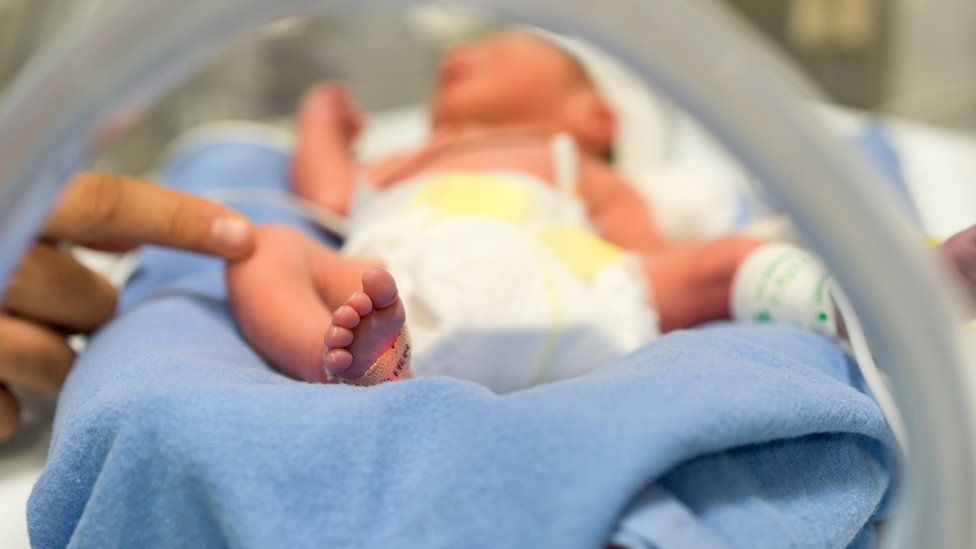Doctors given approval for UK's first 'three-person babies'
- Published

Doctors have received permission to create the UK's first "three-person" babies for two women at risk of passing inheritable diseases to their children.
The two cases involve women who have mitochondrial diseases, which are passed down by the mother and can prove fatal.
Three-person babies involve an advanced form of IVF that uses a donor egg, the mother's egg and the father's sperm.
Doctors at the Newcastle Fertility Centre will carry out the procedure.
The decision was approved by the UK Fertility Regulator, the Human Fertilisation and Embryology Authority (HFEA).
'Considerable risk'
The identities of the women involved in the cases have been withheld, but minutes from an HFEA committee meeting said they both had myoclonic epilepsy with ragged red fibres, or MERRF syndrome, a rare mitochondrial disease.
In approving both cases, the HFEA said there was a "considerable risk" that any children they had would have the disease passed to them.
The three-person baby procedure involves the donation of healthy mitochondria from a third person.
But mitochondria have their own DNA, which is why resulting children have DNA from three people.
However, everything that defines physical and personality traits still comes from parents.
The HFEA must approve every clinic and every patient before the procedure can take place.
In March, the Newcastle Fertility Centre was given the first UK licence to carry out the procedures.
It anticipates helping 25 couples every year.
However, the UK will not be the first country in the world to have children born through the three-person technique.
A Jordanian couple and doctors in New York performed the procedure in Mexico and the resulting baby is understood to be healthy.
Commenting on permission being granted to treat the women, Sarah Norcross, director of the Progress Educational Trust, said it was the "latest milestone in seeking to help parents avoid passing on mitochondrial disease to their children".
"The pace at which these treatments are being rolled out may seem slow, but this highly regulated and measured approach will ensure the highest standards of treatment and follow-up research. Options which for many years have been tantalisingly out of reach to patients are now a step closer.'
- Published16 March 2017
- Published15 December 2016
- Published27 September 2016